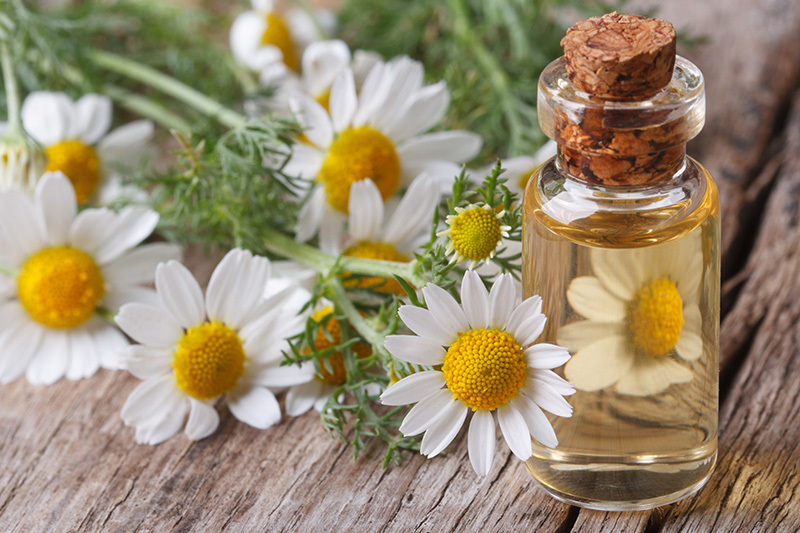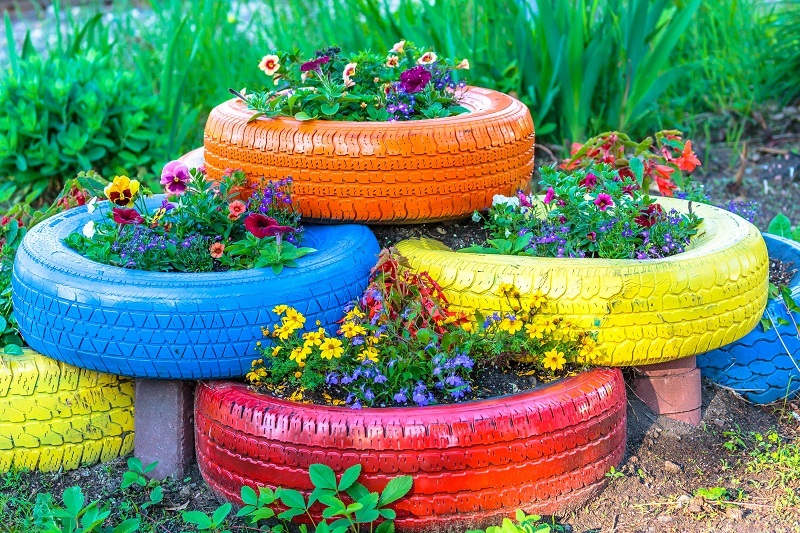Discover the Joy of Flourishing Hydrangeas in Your Garden
Posted on 13/08/2025
Discover the Joy of Flourishing Hydrangeas in Your Garden
Hydrangeas are a true delight for any gardener. With their lush, voluminous blooms and vivid palettes, flourishing hydrangeas can completely transform your outdoor space into a vibrant sanctuary. Whether you are a seasoned horticulturist or a budding gardener, understanding how to nurture and cultivate these enchanting shrubs will lead to years of abundant blossoms and lasting happiness in your garden.
Why Choose Hydrangeas for Your Garden?
There are many reasons hydrangeas are cherished in gardens worldwide. These stunning plants offer:
- Impressive, showy blooms that last from late spring into autumn
- A wide array of colors -- from whites and blues to pinks, lavenders, and even lime greens
- Versatile landscaping potential, from borders to foundation plantings or as standalone features
- Varieties suited to sun, partial shade, and shade exposure
- Low maintenance compared to many other flowering shrubs
With proper care, flourishing hydrangeas provide continuous beauty and structure throughout the gardening season. Let's discover how you can experience the joy of growing these remarkable blooms.

Types of Hydrangeas to Enhance Your Garden
Choosing the right type of hydrangea is essential for achieving a flourishing display. Here are some popular varieties:
1. Bigleaf Hydrangea (Hydrangea macrophylla)
Known for their classic mophead and lacecap flower clusters, bigleaf hydrangeas are famous for their ability to change color based on soil pH. Blue blooms appear in acidic soils, while pink flowers thrive in alkaline conditions.
2. Panicle Hydrangea (Hydrangea paniculata)
These hardy hydrangeas are celebrated for their cone-shaped blooms and remarkable resilience to varying climates. They often start white or green and transform to pink or red as the season progresses.
3. Oakleaf Hydrangea (Hydrangea quercifolia)
Recognizable by their lobed, oak-shaped leaves and dramatic, elongated flower panicles, oakleaf hydrangeas boast stunning fall foliage in addition to their summer flowers.
4. Smooth Hydrangea (Hydrangea arborescens)
The beloved 'Annabelle' is a shining example of this group, featuring enormous ball-shaped white flower heads and excellent cold tolerance.
5. Climbing Hydrangea (Hydrangea petiolaris)
A vigorous climber for walls, fences, and trees, this type produces delicate white lacecap flowers and beautiful exfoliating bark.
Each of these hydrangeas can flourish in your garden, provided they receive the proper conditions for their specific needs.
How to Plant Hydrangeas for Optimal Growth
Planting hydrangeas correctly is key to enjoying their full potential. Follow these steps for success:
1. Select the Perfect Location
- Hydrangeas generally prefer partial shade, especially in warmer climates. Morning sun and afternoon shade are ideal for most types.
- Ensure soil is well-drained--hydrangeas dislike soggy roots.
- Leave ample space for growing -- some varieties can spread several feet wide and tall.
2. Prep the Soil
- Enrich the soil with organic matter: compost, leaf mold, or well-rotted manure.
- Test soil pH if you want to manipulate bloom color, especially with bigleaf hydrangeas.
- Work the soil at least 12-15 inches deep to ensure good root penetration.
3. Planting Steps
- Dig a hole twice as wide and just as deep as the root ball.
- Gently remove the hydrangea from its pot and loosen the roots.
- Set the plant at the same depth as it was in the pot to avoid stem rot.
- Backfill with enriched soil, pressing down gently as you go to remove air pockets.
- Water thoroughly after planting and apply a layer of mulch.
Pro Tip: Plant hydrangeas in early spring or fall for the best establishment and stress-free adaptation.
Care Essentials: How to Grow Flourishing Hydrangeas
With the right attention, your hydrangeas will dazzle season after season. Here are essential care tips for achieving a thriving hydrangea garden:
1. Watering Best Practices
- Hydrangeas require consistent moisture, especially their first year. Deep watering is preferable to shallow, frequent sprinkling.
- Apply 1 inch of water per week, increasing during dry spells or heatwaves.
- Mulch helps retain moisture and regulates soil temperature.
2. Fertilizing for Abundant Blooms
- Feed hydrangeas in early spring with a well-balanced, slow-release fertilizer.
- Bigleaf types benefit from a second, lighter feeding after the first bloom.
- Avoid excessive nitrogen -- this results in lush leaves but fewer flowers.
3. Pruning Techniques
- Knowing when and how to prune depends on the type of hydrangea:
- Bigleaf & Oakleaf: Prune after flowering; these bloom on old wood.
- Panicle & Smooth: Prune in late winter or early spring; they bloom on new wood.
- Remove dead wood and spent blooms regularly to encourage vigorous growth.
Proper pruning ensures a flourishing hydrangea bush with robust flowering year after year.
4. Managing Pests and Diseases
- Hydrangeas are relatively pest-resistant, but keep an eye out for aphids, spider mites, or powdery mildew.
- Ensure good air circulation and avoid overhead watering to prevent fungal issues.
- Remove and dispose of infected leaves promptly.
Unlocking Bloom Color: The Science Behind Hydrangea Hues
One of the delightful features of growing flourishing hydrangeas is their ability to display different colors. Here's how you can influence the shades of your hydrangea blooms:
1. Soil pH and Flower Color
- Blue Flowers: Acidic soil (pH below 6.0) with aluminum availability yields rich blue hues.
- Pink or Red Flowers: Alkaline soil (pH above 7.0) results in pink or even red blossoms.
- Purple & Mixed Shades: Neutral soil or a blend of both conditions can give you enchanting purple blooms.
2. Adjusting Soil pH
- Add garden sulfur, aluminum sulfate, or pine needles to lower pH for blue blooms.
- To raise the pH for pink blooms, apply lime (garden lime or dolomitic lime) in early spring.
- Always follow instructions carefully and test soil regularly for changes.
Note that white hydrangea varieties do not change color based on soil pH.
Hydrangea Design Tips for a Stunning Garden Display
To maximize the visual impact of your flourishing hydrangeas, consider these creative landscaping ideas:
- Mass Plantings: Group several shrubs together for a bold, cloudlike effect.
- Mixed Borders: Pair hydrangeas with hostas, ferns, or shade-loving perennials.
- Understory Accents: Plant beneath trees for dappled light and natural elegance.
- Containers: Enjoy hydrangeas on patios or balconies with well-draining pots.
- Cut Flower Arrangements: Hydrangea blooms look exquisite when brought indoors for fresh or dried bouquets.
Hydrangeas deliver texture, long-lasting color, and natural drama to any garden layout.
Troubleshooting: Common Issues with Garden Hydrangeas
Even with diligent care, gardeners may face challenges with their hydrangeas. Here are troubleshooting tips for common problems:
1. Failure to Bloom
- Improper pruning is the leading cause; verify if your hydrangea blooms on old or new wood.
- Late spring frosts can damage developing buds -- protect with covers if cold is forecasted.
- Excessive nitrogen or insufficient sunlight can also hinder flowering.
2. Wilting Leaves
- Hydrangeas are sensitive to drought and heat; ensure deep, regular watering, especially in the summer.
- Mulch liberally to preserve soil moisture.
3. Discoloration or Spots on Leaves
- Yellowing leaves may indicate nutrient deficiency or poorly drained soil.
- Brown spots can signal leaf spot disease; remove affected leaves and improve air circulation.
4. Pests
- Handpick pests or use horticultural oils for infestations.
- Keep your garden clean of debris to discourage insects and diseases.
How to Overwinter Hydrangeas and Ensure Next Year's Blooms
Hydrangea winter care is crucial for securing robust future flowers:
- Mulch generously around the base in late autumn to insulate roots.
- Bigleaf and oakleaf types benefit from burlap wraps or protective cages filled with leaves in harsher climates.
- Avoid pruning too late in the fall -- this could remove next spring's flower buds.
- Water thoroughly before the ground freezes to maintain hydration during dormancy.
Hydrangeas Throughout the Seasons
Flourishing hydrangeas offer multi-seasonal appeal. Here's what to expect as the year unfolds:
- Spring: Leaf out and bud formation begin
- Summer: Peak blooming season with showy flowers
- Fall: Foliage transforms in oakleaf types; dried blooms add textural contrast
- Winter: Stems and old blossoms provide structural interest and winter habitat for wildlife
Plan for year-round enjoyment as part of a balanced and beautiful garden design.

Frequently Asked Questions About Flourishing Hydrangeas
How often should I water my hydrangeas?
Water deeply once or twice a week, depending on weather and soil conditions. Consistent moisture is the secret to flourishing hydrangea plants.
Can hydrangeas grow in full sun?
Some varieties, like panicle hydrangeas, tolerate full sun with adequate watering, but most prefer morning sun and afternoon shade for best growth.
Do hydrangeas require pruning every year?
Pruning requirements depend on the variety. Remove dead wood and shape as needed, but avoid over-pruning, especially for types that bloom on old wood.
How do I make my hydrangea flowers more vibrant?
Feed with balanced fertilizer, monitor soil pH, and maintain consistent watering. Remove faded blooms (deadheading) for extended flowering.
Conclusion: Experience the Joy of Growing Hydrangeas
Flourishing hydrangeas add a magical, long-lasting charm to any landscape. They offer an effortless blend of color, form, and seasonal interest, while being accessible to gardeners of all skill levels. With careful selection, attentive care, and a little creative planning, your hydrandeas will thrive and bring you and your family joy for years to come.
Ready to start? Choose your favorite hydrangea varieties, plant with intention, and nurture your blooms with love. In no time, you'll bask in the beauty and happiness that only a garden filled with flourishing hydrangeas can provide!







